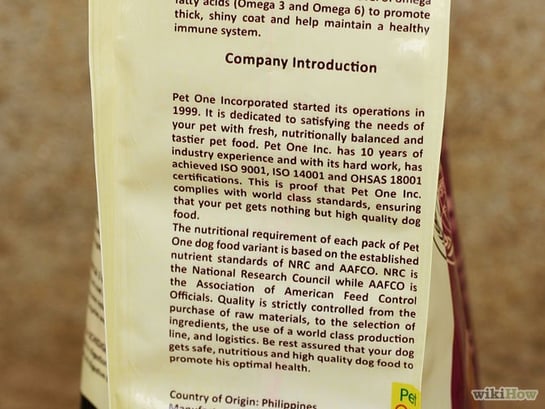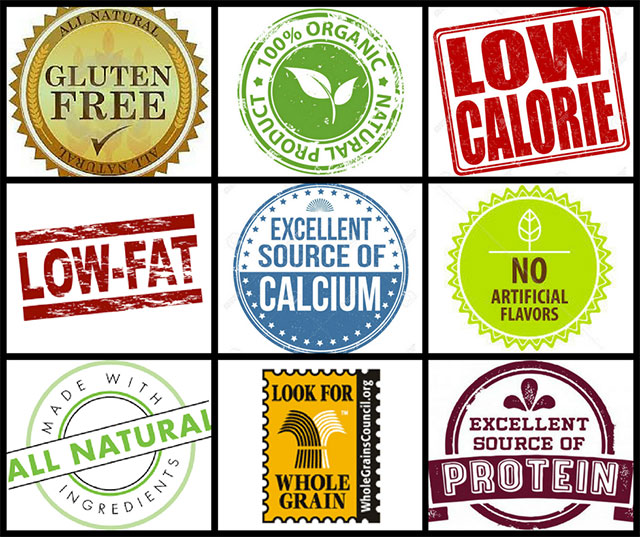42 pet food labels explained
Labelling | PFMA All information given on a pet food label must be truthful and not misleading about the nature and quality of the product. The law requires a statutory statement to be put on every label or package which must contain certain obligatory declarations. • directions for use/feeding instructions. • % of crude ash (ash represents the mineral ... Dog Food Nutrition Labels Explained | The Munch Zone Another section on the dog food label that may catch your eye is the guaranteed analysis. This will list the minimum percentage of proteins and fats included in the food, along with the maximum percentages of moisture and fiber. Some may even list the percentages of minerals such as phosphorus and calcium.
Cat Food Labels COMPLETE GUIDE - Caticles There are 4 crucial steps to reading cat food labels properly. Product name rules Ingredients list Guaranteed analysis Nutritional adequacy statement And a bonus: the manufacturer. Product name rules The product name rule tells us how much of the named ingredient is in the product. This could range from 0% minimum requirement to 95%.
Pet food labels explained
How To Read And Interpret Pet Food Labels - Veterinary Practice News The rules of pet food (and human food) labeling call for the manufacturer to list some basic nutrient percentages on the label. A typical canned food label may have a guaranteed analysis that looks like this: • CRUDE PROTEIN … Min. 9.5% • CRUDE FAT … Min 5.0% • CRUDE FIBER … Max 0.8% • MOISTURE … Max 75% • ASH (MINERALS) … Max 2.0% Know Your Cat - Catfood labels explained Dry food 1 - 'Turkey and Rice with vegetables complete cat food' - In the list of ingredients we will find: White rice (minimum 26%), Turkey meat meal (minimum 26%). Dry food 2 - Adult complete with Rabbit, Turkey and Vegetables - In the list of ingredients cereals are listed first followed by meat and animal derivatives (min 4% Rabbit and min ... Dog Food Ingredients - Labels Simply Explained - Wag The Dog UK The Law in the UK:. Pet food manufacturers have the option to declare them by category — e.g. 'meat and animal derivatives', 'oils and fats', 'cereals', 'vegetable protein extracts'. Declaration by categories allows for fluctuations in the supply of the raw materials used and provides flexibility for labelling ingredients without incurring unreasonable cost.
Pet food labels explained. How to Read a Pet Food Label - DVM 360 Pet food ingredients labeled as such are not as harmful as some advertisements might portray. By-products can include highly digestible and nutritious organs. Additionally, some filler items, such as corn, rice, and potatoes, can be listed separately to give the illusion that less of the product exists in the total formula. Understanding Pet Food Labels - vetstreet.com Pet owners may be concerned to see "phylloquinone," "α-tocopherol," "cobalamin" and "ascorbic acid" listed on their pets' food until they learn that these are the technical names for vitamins K 1, E, B 12 and C, respectively. α-Tocopherol is also an antioxidant. Antioxidants are added to foods to balance the nutrient profile and preserve fats. Label tips, label news, label design & marketing ... - Advanced Labels NW Top Tips for an Effective Front Label Design. Posted by Advanced Labels NW. Jul 28, 2015 10:00 PM ... A Comprehensive Guide to Reading Pet Food Labels [Infographic] The 95% Rule: Pet food with labels like "Lamb dog food" or "Lamb food for cats" would indicate that this product is required to have at least 95% lamb protein or beef protein, not counting water weight. Pets with high protein requirements will benefit from foods like this.
3 Ways to Read a Pet Food Label - wikiHow You'll soon feel empowered to make an informed pet food purchase! Method 1 Reading the Ingredient List 1 Pay the most attention to the first 3 ingredients that are listed. This is because pet food labels must list the ingredients by weight, starting with the ingredient that makes up most of the pet food. Understanding Dairy Labels | ASPCA Understanding Dairy Labels. Don't be fooled by food labels that sound like they mean better for dairy cows. Use our guide below to learn how these labels actually impact cow welfare—or how they don't. Look for the ASPCA recommended labels Animal Welfare Approved, Certified Humane and Global Animal Partnership (Step 2 or higher), and then ... How to Read Pet Food Labels Properly | Hill's Pet So, you rush to the pet store, check the variety of brands and begin reading cat food labels. What is a pet food label? A pet food label is a legal document regulated by the Association of American Feed Control Officials (AA,FCO) and is the primary means of communication between the pet food manufacturers and pet owners. Deciphering the label. Purina Pet Food Labels Explained | Purina Our pet food labels are one of the most effective ways in which we can demonstrate this. What we state on our pet food labels corresponds to what the product contains. All our products are formulated by professionals and based on research and science, to deliver the best possible pet nutrition and contribute positively to the health and well ...
Pet Food Standards Explained - The Farmer's Dog Pet food companies can say on their labels that they are selling "food" and using "food" ingredients, while actually using feed-grade ingredients inside the bag or can. Those ingredients are subject to high-heat processing which kills pathogens, but in turn creates substances that are dangerous for dogs to eat (more on that later). Purina Pet Food Labels Explained | Purina Our pet food labels are one of the most effective ways in which we can demonstrate this. What we state on our pet food labels corresponds to what the product contains. All our products are formulated by professionals and based on research and science, to deliver the best possible pet nutrition and contribute positively to the health and well ... Pet Food Labelling Explained | Skinner's Why label pet food? Pet food, as any other animal feed, needs to be labelled in accordance with the latest regulations to ensure that you receive correct information about that particular product.Name and product description Composition (ingredients list) Analytical constituents Information about additives Best before date and batch code Understanding Dog Food Labels | Watchdog Labs There are three options for brands to name their food: If the packaging uses the word "food" the product is required to contain at least 95% of that ingredient. So Tiny Pup Chicken Dog Food would need to contain at least 95% chicken. This is not very common, because it wouldn't provide enough other nutrients like carbs.
A Guide To Pet Food Labelling | PFMA Fediaf Code Of Good Labelling Practice. A Guide To Pet Food Labelling. Pet Food Ingredients FAQ's. Pet Nutrition and Health FAQ's.
Pet Food Labels - General | FDA Pet food labeling is regulated at two levels. The federal regulations, enforced by the United States Food and Drug Administration (FDA), establish standards applicable for all animal feeds: proper...
Dog food ingredients explained: A vet's guide to reading a dog food label When reading a dog food ingredient label, you should remember that the ingredients are listed in order of weight, with the heaviest first. However, this can be a bit confusing and misleading. You might expect the meat to appear first on the list because protein should be the main component of dog food.
Interpreting Dog Food Labels | PetCoach The label shows 5% protein. So we take the 5% and divide it by 20% and we get 25% protein on a dry matter basis. So the canned food has more protein per pound on a dry matter basis after all the water is taken out. We can do the same for fat, fiber, etc. Guaranteed analysis
How to Read a Dog Food Label - American Kennel Club All pet food labels follow roughly the same format: Product and brand name or unique identifier. Quantity in terms of product weight, liquid measure, or count, depending on the formulation of the...
How Do You Label Pet Treats? (Solved & Explained!) When you are labelling your pet treats, there are some basic standards that you will need to follow to keep your customers and governing entities like the FDA happy. Be sure that your labels include the following: Business name and address Type of treats and for which animal, i.e. 'dog treats' or 'cat treats' Weight of package Ingredients
Pet Food Back Labels - Explained - GA Pet Food Partners The prime purpose of pet food labels is to provide clear, accurate and honest information about a product that may facilitate the buying act of the purchaser. Back of pack information usually contains much of the information required by legislation and may provide more detail about the nutritional content and value of the product.
AAFCO and Its Influence On Pet Food Labels - IAMS Label states : "ABC Dog (Cat) Food is formulated to meet the nutritional levels established by the AAFCO Dog (Cat) Food Nutrient Profiles for (appropriate life stage)." Feeding trials The finished product that has been laboratory tested is fed to dogs or cats according to AAFCO protocols.
Guaranteed Analysis: What Does It Mean? - Primal Pet Foods A dry food is approximately 88-90% dry matter, while a moist food is only about 22-25% dry matter. To convert a nutrient guarantee to a dry matter basis, the percent guarantee should be divided by the percentage of the dry matter then multiplied by 100. Here's an example: A moist food guarantees 12% crude protein and 75% moisture (or 25% dry ...
Understanding Chicken Labels | ASPCA Understanding Chicken Labels. Don't be fooled by food labels that sound like they mean better for chickens. Use our guide below to learn how these labels actually impact chicken welfare—or how they don't. Look for the ASPCA recommended labels Animal Welfare Approved, Certified Humane and Global Animal Partnership (Step 2 or higher), and ...
4 Sly Ways Pet Food Labels Are Misleading You | PetGuide The first ingredient listed on the label is (falsely) assumed to be the most plentiful one in the mix, so they will sneakily put the best one first, like the protein source (usually chicken or beef). This doesn't automatically mean that the food is rich in protein- read the whole label before putting it in your shopping cart! Protein percentage
Dog Food Ingredients - Labels Simply Explained - Wag The Dog UK The Law in the UK:. Pet food manufacturers have the option to declare them by category — e.g. 'meat and animal derivatives', 'oils and fats', 'cereals', 'vegetable protein extracts'. Declaration by categories allows for fluctuations in the supply of the raw materials used and provides flexibility for labelling ingredients without incurring unreasonable cost.
Know Your Cat - Catfood labels explained Dry food 1 - 'Turkey and Rice with vegetables complete cat food' - In the list of ingredients we will find: White rice (minimum 26%), Turkey meat meal (minimum 26%). Dry food 2 - Adult complete with Rabbit, Turkey and Vegetables - In the list of ingredients cereals are listed first followed by meat and animal derivatives (min 4% Rabbit and min ...
How To Read And Interpret Pet Food Labels - Veterinary Practice News The rules of pet food (and human food) labeling call for the manufacturer to list some basic nutrient percentages on the label. A typical canned food label may have a guaranteed analysis that looks like this: • CRUDE PROTEIN … Min. 9.5% • CRUDE FAT … Min 5.0% • CRUDE FIBER … Max 0.8% • MOISTURE … Max 75% • ASH (MINERALS) … Max 2.0%












Post a Comment for "42 pet food labels explained"